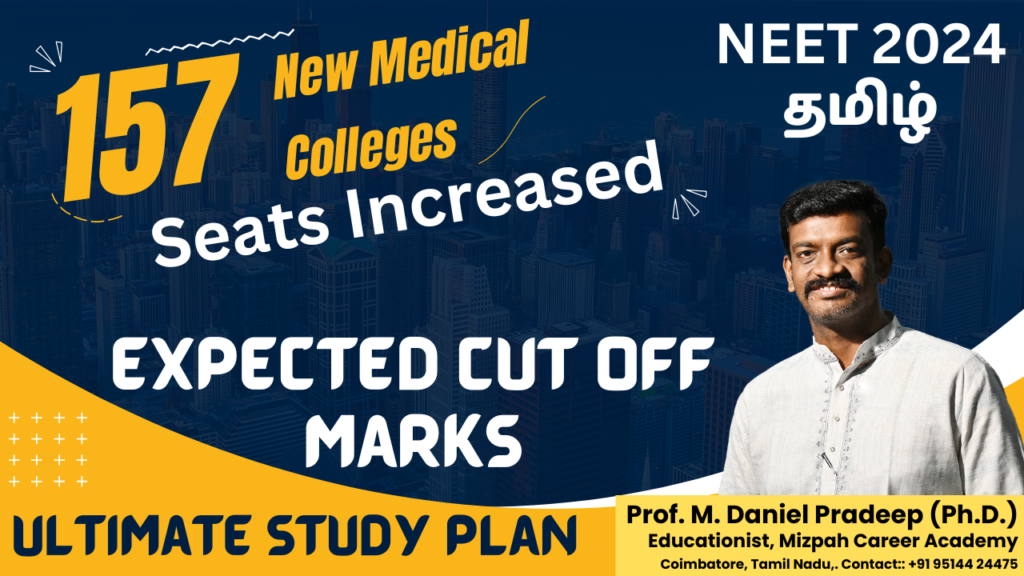Transforming Healthcare in India: A Detailed Review of Patient-Doctor Ratio Initiatives and Medical College Expansion. A wave of new medical colleges and deliberate efforts to improve the patient-to-doctor ratio are revolutionizing the healthcare scene in India. This blog offers a thorough analysis of the significant steps made to improve healthcare accessible as well as the rapid rise in medical education.

Unprecedented Growth in Medical Colleges and MBBS Seats
Contents
The number of medical colleges in India has increased dramatically by 82% between 2014 and 2016, rising from 387 to 706. This phenomenal expansion is matched by an astounding 112% increase in MBBS seats, which went from 51,348 to an astounding 1,08,940.
Strategic Steps for Augmenting Doctor Availability
1. Centrally Sponsored Scheme for New Medical Colleges
Out of the 157 recognized medical colleges, 108 have been operationalized under the Centrally Sponsored Scheme, promoting medical education at the community level.
2. Upgradation of Existing Medical Colleges
Both MBBS and PG seats are being increased through the Centrally Sponsored Scheme for strengthening existing medical colleges. Of the 75 projects approved under the Pradhan Mantri Swasthya Suraksha Yojana (PMSSY), 64 have already been completed.
3. Establishment of New AIIMS
Nineteen of the 22 institutions that have received authority to open up new AIIMS under the Central Sector Scheme are currently delivering undergraduate courses. This program seeks to guarantee high-quality medical care across multiple areas.
4. Norm Relaxations for Medical College Setup
The government has loosened regulations regarding staffing levels, bed counts, professor qualifications, and other infrastructural requirements in an effort to promote the creation of medical colleges.
5. Recognition of DNB Qualification
The lack of faculty in medical institutions is addressed by the recognition of the DNB qualification as qualifying for faculty jobs.
Also Read : NEET 2024 Exam Date Out, Application Form, Eligibility Criteria and Fee
6. Extension of Age Limits
Retaining experienced specialists is further aided by medical colleges extending their age limitations for appointments to 70 years.
Initiatives for Nursing Education and Personnel
1. Centrally Sponsored Scheme for New Nursing Colleges
An increase in nursing education has been aided by the approval of 157 nursing institutions, in pace with the expansion of medical colleges.
2. Norm Relaxations for Nursing Institutes
The government has loosened regulations for nursing schools, lowering the required amount of land from three acres to five4,000 square feet for the construction of a structure housing a hostel and a school or college of nursing.
3. Flexible Norms for Hilly and Tribal Areas
The requirements for starting GNM and B.Sc. (Nursing) programs have been loosened, particularly for hilly and tribal areas.
4. Maximum Seats without a Medical College
For B.Sc.(N)/GNM programs, institutions without a medical college but having a parent hospital that has 300 beds are now eligible to get up to 100 seats.
5. Distance Relaxation
A flexible travel time between the hospital and the school guarantees better accessibility for nursing education.
Doctor-Population and Nurse-Population Ratio
As of June 2022, there are 13,08,009 allopathic doctors registered with the State Medical Councils and the National Medical Commission (NMC). Assuming 80% availability, the doctor-to-population ratio is 1:834. Furthermore, there are 36.14 lakh nursing workers as of December 2022, resulting in a nurse-population ratio of 1:476, assuming 80% availability.
This comprehensive overview highlights the monumental strides taken by the Indian government in enhancing medical education and healthcare accessibility. The surge in medical colleges, coupled with strategic initiatives, reflects a concerted effort to fortify the nation’s healthcare infrastructure and ensure a healthier future.

